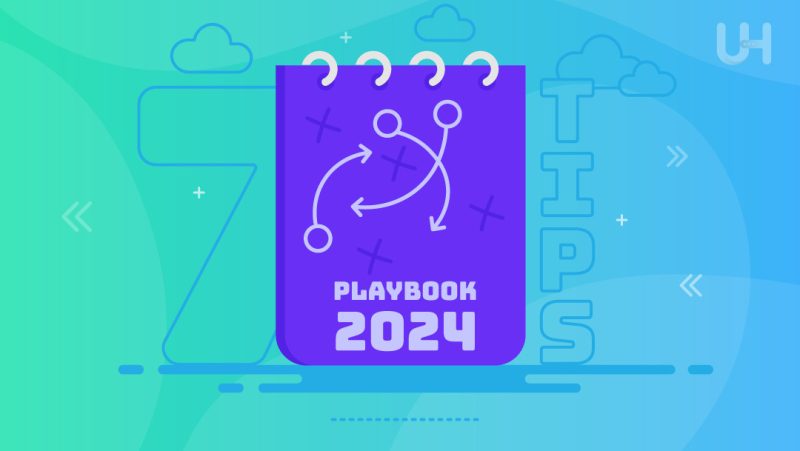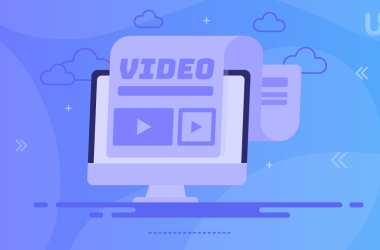As we stand at the threshold of 2024, the digital landscape stretches before us brimming with opportunities and challenges alike. It’s a world where creativity meets technology, where ideas can spark and ignite viral sensations overnight, and where the right strategy can turn a passion project into a lucrative career. But, navigating this digital expanse requires more than just a knack for crafting engaging content; it demands a keen understanding of the trends, technologies, and tastes that shape the online world.
As content creators, we’re not just storytellers or marketers; we’re pioneers in a constantly evolving ecosystem, seeking to carve out our niche and connect with audiences on a level that transcends the traditional boundaries of media.
Yet, with great opportunity comes great competition. The internet is a crowded place, and standing out requires ingenuity, adaptability, and a dash of daring.
In this spirit, we’re diving below into an exploration designed to equip you with the tools, tactics, and insights needed to thrive as a content creator in 2024.
Whether you’re just starting out or looking to elevate your game, the 7 tips that follow will be your compass in the digital wilderness, guiding you towards meaningful engagement, sustainable growth, and, ultimately, profitability.
Let’s get started.
7 Tips for Turning Your Ideas into Profit
Understand Your Audience
Before we jump into the nuts and bolts of content creation, let’s take a moment to talk about the foundation of any successful content strategy: understanding your audience.
It’s like setting up a GPS before a road trip; you need to know where you’re going to navigate the journey successfully.
Here are the steps:
Identify Your Audience
The first step is identifying who your audience is. Are they busy professionals looking for quick, actionable advice? Are they tech enthusiasts eager for the latest gadget reviews? Or maybe they’re parents looking for family-friendly activities.
Whoever they are, getting a clear picture of your audience is crucial. But how do you figure this out? Start with demographic data like age, location, and gender. Then, dig deeper.
What are their hobbies? Challenges? Dreams? Tools like social media insights and website analytics can give you a peek into your audience’s world.
Surveys and direct feedback can also be goldmines of information. Remember, the more you know about your audience, the better you can tailor your content to fit their needs.
Analyze Audience Preferences
Once you know who your audience is, it’s time to understand what makes them tick. This is where analyzing their preferences comes into play. What type of content do they engage with most?
Do they prefer in-depth articles, quick tips, video tutorials, or podcasts? Each format has its charm, and knowing which one resonates with your audience can make all the difference.
But it’s not just about the format. It’s also about the topics they care about. This is where social listening tools can be incredibly helpful. Keep an eye on social media conversations, forums, and comment sections related to your niche.
What questions are people asking? What problems do they need solutions for? This can guide you in creating content that answers their questions, solves their problems, and ultimately, keeps them coming back for more.
Create Engagement and Tailor Your Content
Knowing your audience and understanding their preferences is great, but the real magic happens when you engage with them. It’s like a dialogue; your audience wants to feel heard and understood.
Respond to comments, participate in discussions, and maybe even feature user-generated content. This not only boosts engagement but also builds a sense of community and loyalty around your brand.
Tailoring your content to meet your audience’s needs is the final piece of the puzzle. This doesn’t mean you can’t explore new ideas or topics. Instead, it’s about framing those ideas in a way that connects with your audience.
Use language they understand, share stories they can relate to, and provide value they can’t find anywhere else.
Remember, understanding your audience is an ongoing process. As trends change and new platforms emerge, so too will the preferences and behaviors of your audience. Keep your finger on the pulse, stay adaptable, and never stop learning.
After all, your audience is the reason you create content in the first place. By keeping them at the heart of your strategy, you’re not just reaching people; you’re connecting with them, and that’s what turns good content into great content.
Create Valuable Content

In the bustling world of content creation, standing out from the crowd isn’t just about being louder; it’s about being smarter.
Creating valuable content is the cornerstone of any successful online presence. But what does “valuable” really mean in the context of 2024’s digital landscape?
Let’s break it down:
Defining Value in Content
Value is a chameleon in the content world; it changes hues depending on who’s looking. For some, it’s about solving a problem or answering a question. For others, it’s about providing a fresh perspective or a moment of delight.
The key to defining value in your content is understanding what your audience craves and delivering it in spades. But how do you pinpoint that craving?
Start with the basics: does your content inform, inspire, entertain, or educate? If it doesn’t hit at least one of these notes, you might need to revisit the drawing board.
Valuable content often does more than just one; it might educate while entertaining or inspire while informing. The blend is where the magic happens.
Techniques for Generating Ideas
Staring at a blank page can be daunting. Where do the good ideas come from? They’re usually hiding in plain sight.
Keeping up with industry news, leveraging keyword research to understand what people are searching for, and tapping into the zeitgeist through social media trends are all fertile grounds for content ideas.
Don’t forget to look inward, too. Customer feedback, common questions, and even your own experiences can spark content gold. The trick is to keep a running list of ideas—no matter how half-baked. Over time, some will stand out as winners with a bit of refinement.
Balancing Quality and Quantity
In the digital age, content is king. But in a kingdom oversaturated with information, quality reigns supreme. It’s tempting to pump out content at warp speed to stay visible, but if that content doesn’t provide real value, it’s just noise.
Finding the sweet spot between quality and quantity is crucial. Consistency is key, but never at the expense of quality.
It’s better to publish less frequently and ensure each piece is impactful than to bombard your audience with filler. Remember, every piece of content is a reflection of your brand. Make it count.
Crafting Engaging and Original Content
Originality is your secret weapon. In a sea of sameness, unique and engaging content captures attention and hearts.
This doesn’t mean you have to reinvent the wheel with every post, but injecting your personality, taking a new angle on a tired topic, or presenting information in a novel way, such as generating QR codes that lead to a PDF or download, can make all the difference.
Engagement is the other half of the puzzle. Invite your audience to participate in the conversation. Ask questions, encourage comments, and create content that sparks dialogue. When your audience feels involved, they’re more likely to return and bring friends.
The Role of Storytelling
Never underestimate the power of a good story. Storytelling in marketing can transform a mundane topic into an unforgettable experience. It’s not just about what you say; it’s about how you say it.
Whether it’s through captivating visuals, compelling narratives, or relatable examples, storytelling weaves a thread that connects your content to your audience on an emotional level.
In 2024, valuable content is more than just information; it’s an experience. It’s content that leaves your audience feeling richer for having consumed it.
By focusing on quality, originality, engagement, and storytelling, you’re not just filling space on the internet; you’re creating something meaningful. And in the world of content creation, that’s the most valuable thing of all.
Optimize for Search Engines
In the digital age, visibility is as crucial as the quality of your content. No matter how groundbreaking your ideas are, they won’t have an impact if they’re invisible to your target audience.
That’s where search engine optimization comes into play. Optimizing for search engines is akin to setting up signposts on the internet highway, guiding users to your content.
Let’s unpack how to make your content not just seen, but also engaged with, in 2024.
Key SEO Trends and Practices
SEO is not a static game; it evolves as search engines refine their algorithms to better match content with users’ needs. Staying ahead means keeping a pulse on the latest SEO trends.
For instance, voice search optimization is becoming increasingly important as more people use voice-activated devices. Structuring content to answer questions directly can improve your chances of appearing in voice searches.
Another growing trend is the emphasis on E-A-T (Expertise, Authoritativeness, Trustworthiness). Google wants to ensure that high-ranking content is not only relevant but also comes from credible sources.
Demonstrating your expertise through well-researched, authoritative content, and backing up claims with data or reputable sources, can boost your SEO standing.
Importance of Keywords, Meta Descriptions, and Content Structure
Keywords are the linchpin of SEO; they’re how search engines decipher the relevance of your content to users’ queries. But keyword stuffing is a relic of the past.
In 2024, it’s all about using keywords naturally within your content, including long-tail keywords that match the conversational tone of voice searches.
Meta descriptions, while not a direct ranking factor, play a crucial role in click-through rates. A compelling meta description acts like a billboard for your content, enticing users to click through from the search results page.
Content structure is equally important. Breaking your content into digestible chunks using headers (H1, H2, H3, etc.) not only improves readability but also helps search engines understand the hierarchy and relevance of your information.
Incorporating multimedia elements like images, videos, and infographics, with appropriate alt text for images, can also enhance your SEO by keeping users engaged and reducing bounce rates.
Utilizing Analytics to Refine SEO Strategies Over Time
The beauty of digital marketing is its measurability. Utilizing analytics tools, you can track how well your SEO strategies are performing. Metrics such as page views, bounce rate, and time spent on page can provide insights into how engaging your content is.
Meanwhile, tracking keyword rankings and organic traffic can help you understand how visible your content is in search results.
Analytics offer a feedback loop for continuous improvement. Perhaps certain topics or formats consistently perform better, or maybe changes in keyword strategy lead to increased visibility.
By analyzing these patterns, you can refine your content strategy to better meet your audience’s needs and improve your search engine rankings.
In the digital tapestry of 2024, social media is not just a thread; it’s a vibrant color that can make your content truly stand out.
It’s a dynamic, ever-evolving platform that offers a unique way to connect with your audience, share your content, and build a community around your brand.
But to harness its full power, you need a strategy that’s as multifaceted as the platforms themselves.
Let’s explore below how you can leverage social media to elevate your content creation game.
Each social media platform has its own language, culture, and audience preferences. Instagram, with its visually rich platform, is perfect for storytelling through images and short videos. X (formerly known as Twitter,) on the other hand, thrives on timely, concise messages and conversations.
LinkedIn caters to professional content, while TikTok is the go-to for engaging and creative short-form videos. Understanding these nuances is key to tailoring your content strategy for each platform.
But it’s not just about scheduling your content and posting it. It’s about creating platform-specific content that engages. For example, an in-depth article might perform well on LinkedIn, while a visually captivating infographic or a quick tip video could be more suited to Instagram or TikTok.
The goal is to match your content’s format and message with the platform’s strengths and user expectations.
Building a Consistent Brand Across Multiple Channels
Consistency is king in building a recognizable and trusted brand on social media. This doesn’t mean posting the same content across all platforms. Instead, it’s about maintaining a consistent voice, aesthetic, and value proposition while tailoring the execution to fit each platform.
Whether it’s through a consistent color scheme, recurring themes, or a unique content style, your brand should be instantly recognizable, no matter where your audience encounters it.
A cohesive brand experience strengthens your identity, builds trust, and enhances audience recall. It tells your audience that no matter where they find you, they can expect the same quality and value in your content.
Engaging with the Audience Through Interactive and Multimedia Content
Engagement is the currency of social media, and interactive content is the gold standard. Polls, quizzes, Q&As, live streams, and stories invite your audience to participate rather than just consume.
This two-way interaction fosters a deeper connection and makes your audience feel like an active part of your community.
Multimedia content, such as videos, GIFs, and infographics, keeps your feed dynamic and engaging. They’re not just eye-catching; they’re also more likely to be shared, extending your reach beyond your immediate followers.
The key is to balance creativity with value, ensuring that each piece of content not only grabs attention but also enriches your audience’s experience.
Monetize Your Content
Turning your content into a revenue stream is an ambition many creators share. As we navigate through 2024, the avenues for monetizing content are as diverse as the content itself.
Whether you’re a blogger, podcaster, or social media influencer, the potential to earn from your passion has never been more accessible.
Yet, the key to unlocking this potential lies in understanding the monetization models available and strategically aligning them with your content and audience.
Let’s dive into how you can make your content work for you.
Overview of Various Monetization Models
The digital landscape offers a plethora of monetization models, each with its unique benefits and challenges:
- Advertisements: Incorporating ads into your content, whether through ad networks like Google AdSense, sponsored content, or direct advertising deals, can provide a steady income stream. The key is to balance ad placements with user experience, ensuring ads complement rather than detract from your content.
- Sponsorships: Partnering with brands for sponsored content can be lucrative, especially if your audience aligns with the brand’s target market. Sponsorships can range from sponsored posts and videos to social media shoutouts, offering a more integrated approach to advertising.
- Subscriptions and Memberships: Offering exclusive content, perks, or access to a community for a subscription fee can build a loyal and engaged audience willing to pay for premium content.
- Product Sales: Selling products, whether digital (e-books, courses, software) or physical (merchandise, handcrafted goods), directly to your audience can significantly boost your revenue.
- Affiliate Marketing: Earning commissions by promoting other companies’ products can be a subtle yet effective monetization strategy, especially if the products are relevant and valuable to your audience.
Tips for Choosing the Right Monetization Strategy
Choosing the right monetization strategy hinges on understanding your content type and audience.
Consider the following:
- Audience Preferences: What will your audience realistically engage with or purchase? Surveys and direct feedback can help gauge their interest in different types of monetization.
- Content Alignment: Ensure the monetization method aligns with your content. For example, affiliate marketing works well with product review blogs, while subscriptions might be more suited to educational content platforms.
- Brand Integrity: Choose monetization strategies that maintain or enhance your brand integrity. Sponsorships and advertisements should be relevant and add value to your audience’s experience.
The digital realm is crowded, and standing out is more challenging than ever. To navigate this, focus on building a unique value proposition. Why should someone consume your content, let alone pay for it? Highlighting your uniqueness and continuously delivering value are critical.
Building a strong community around your content can also set you apart. Engaged followers are more likely to support monetization efforts, whether through purchasing products, engaging with sponsored content, or signing up for subscriptions.
Build a Community
As we sail through 2024, the concept of community has transcended physical boundaries, becoming a cornerstone of success in the content creation realm.
Building a community is about nurturing a space where individuals feel connected, not just to you and your content, but to each other. It’s about creating a sense of belonging and mutual support that enriches everyone involved.
Let’s delve into how to cultivate this invaluable asset.
Importance of Community Building in Establishing a Loyal Audience
A strong community is the lifeblood of any content creator’s platform. It transforms passive viewers, readers, or listeners into active participants who engage, share, and contribute to the growth of your platform.
This engagement goes beyond mere numbers; it’s about fostering genuine relationships that build trust and loyalty.
In a digital age where audiences are bombarded with content, those who feel a personal connection to your brand are more likely to stick around, advocate for you, and become part of your success story.
Techniques for Fostering an Active and Engaged Community
Creating an engaged community doesn’t happen by accident; it requires intentional strategies and consistent effort.
Here are a few techniques to help you build and nurture your community:
- Interactive Content: Incorporate polls, quizzes, and question prompts into your content to encourage participation and interaction among community members.
- Regular Engagement: Make it a habit to respond to comments, messages, and emails. Acknowledging your audience’s contributions makes them feel valued and deepens their connection to your community.
- Community Platforms: Utilize platforms like Discord, Facebook Groups, or custom forums to give your community a dedicated space to interact, share ideas, and support one another.
- User-Generated Content: Encourage your community to share their own stories, creations, or experiences related to your content. This not only amplifies customer engagement but also gives members a sense of ownership and belonging within the community.
- Exclusive Events: Host live Q&As, webinars, virtual meetups, or special events for your community members. These experiences can strengthen bonds and create memorable moments.
Leveraging Community Feedback for Content Improvement and Idea Generation
An engaged community is a goldmine of insights and ideas. Feedback from your audience can guide content development, helping you tailor your offerings to meet their needs and preferences more effectively.
Encourage feedback through surveys, suggestion boxes, or direct conversations. Not only does this provide valuable information for you, but it also makes your community feel heard and respected, fostering a stronger connection.
Moreover, community feedback can spark new content ideas or highlight areas for improvement. Members who are invested in your platform often come up with innovative suggestions that you might not have considered.
This collaborative approach to content creation not only enriches your content but also strengthens the community’s bond, as they see their input come to life.
Analytics and Feedback
In the fast-paced world of content creation, intuition can take you far, but data drives you forward.
As we navigate through 2024, analytics and feedback have become the compass that guides content creators through the ever-changing digital landscape.
This dynamic duo offers a window into the hearts and minds of your audience, allowing you to tailor your content with precision and care.
Let’s explore below how leveraging analytics and embracing feedback can transform your content creation process.
Utilizing Data Analytics to Track Content Performance
Data analytics isn’t just about numbers; it’s about narratives. Each click, view, share, and comment tells a story about how your content resonates with your audience.
By diving into these analytics, you can uncover patterns and trends that reveal what works and what doesn’t.
Platforms like Google Analytics, social media insights, and content management systems provide a wealth of data, from demographic information to engagement rates and beyond.
Key metrics to focus on include:
- Engagement Rates: Measures how actively involved your audience is with your content. High engagement rates indicate content that captures and holds attention.
- Traffic Sources: Identifies where your audience is coming from, helping you understand which platforms or search terms are driving the most visits.
- Bounce Rates: Offers insight into how long people stay on your page. A high bounce rate might suggest that your content isn’t meeting visitors’ expectations or that your page layout is not engaging enough.
- Conversion Rates: Critical for monetized content, tracking how effectively your content persuades visitors to take a desired action, such as subscribing, purchasing, or filling out a contact form.
Gathering and Incorporating Audience Feedback into Content Planning
While analytics provide the what, feedback gives you the why. Direct feedback from your audience—be it through comments, emails, social media interactions, or surveys—adds depth to the data, offering insights into your audience’s preferences, questions, and concerns.
Creating channels for open communication encourages your audience to share their thoughts and feelings about your content.
This feedback is invaluable for:
- Content Improvement: Constructive criticism can highlight areas for enhancement, from the depth of information provided to the clarity of your explanations.
- Idea Generation: Your audience can be a fantastic source of ideas for new content, pointing out topics they’re interested in or questions they need answered.
- Building Community: Actively seeking and responding to feedback shows your audience that you value their input, fostering a stronger sense of community and loyalty.
Continuous Learning and Adaptation Based on Analytical Insights
The digital world does not stand still, and neither should your content strategy. Analytics and feedback form a feedback loop that fuels continuous improvement and adaptation.
By consistently monitoring performance and listening to your audience, you can stay ahead of trends, refine your content to better meet audience needs, and identify new opportunities for growth and engagement.
Adopting a mindset of continuous learning keeps your content dynamic and relevant. It encourages experimentation—trying new formats, topics, or strategies to see how they perform and adjusting based on the results.
This agile approach to content creation ensures that your content remains fresh, engaging, and aligned with your audience’s evolving interests.
Conclusion
In this article, we’ve traversed the digital landscape, uncovering strategies, tools, and insights designed to empower you, the modern content creator, to navigate the complexities of an ever-evolving online world.
But as we part ways, it’s crucial to remember that this journey doesn’t end here. In fact, it’s just beginning.
The seven tips we’ve delved into are more than just tactics; they’re stepping stones towards building a meaningful connection with your audience, crafting content that resonates on a deeper level, and establishing a presence that stands the test of time and the tide of trends.
As you continue to grow and evolve, let your audience be your compass, their feedback your map, guiding you through the vast expanse of the digital age.
And remember that the digital landscape is always shifting, and staying ahead means staying informed, staying passionate, and most importantly, staying true to your vision.
Here’s to your success in 2024 and beyond!
Using the best solutions is your recipe for success. Consider Ultahost for web hosting, and let’s enhance your startup experience together. Don’t miss out on the opportunity to take your project to new heights with our reliable hosting solutions.











